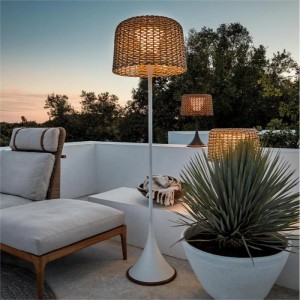Have you ever wondered how lighting is made? How is lighting made that can be used indoors and outdoors?
The production of lights for lighting manufacturing is a complex process that involves multiple steps. From raw materials to finished products, lighting manufacturers have come up with innovative solutions to provide lighting solutions that are not only functional but also beautiful.
In this blog post, we will explore the lighting manufacturing process. We will cover all the steps from design to assembly and installation. We will give you some tips for choosing a lighting manufacturer.
History of Lighting
Before the advent of electricity, people used candles and oil lamps for lighting. Not only was this inefficient, but it also posed a fire risk.
In 1879, Thomas Edison revolutionized lighting with his invention of the incandescent light bulb. This new light bulb was much more energy efficient than candles and oil lamps, and soon became the standard for home lighting. However, incandescent bulbs are not without their drawbacks. They are not very energy efficient, and they generate a lot of heat.
As a result, many people are now looking for alternatives to incandescent bulbs, such as LED bulbs. LED bulbs are much more energy efficient than incandescent bulbs, and they generate very little heat. This makes them a more attractive option for home lighting.
Lighting materials
In lighting manufacturing, raw materials are used to produce lamps and bulbs. The most common raw materials for lighting include the following:
Metals
Metals such as aluminum, copper, and steel are used to make lighting fixtures. Metals are durable and can be made into a variety of shapes and sizes.
Glass
Glass is often used in lighting because it transmits light very well. It also adds beauty to lighting fixtures. LED panel light manufacturers often incorporate glass into their designs to enhance the overall appearance and functionality of their products.
Wood
Wood is another common material used to make lighting fixtures. Wood adds a sense of warmth and texture, while also being a natural, renewable, and environmentally friendly material that is difficult to achieve with other materials.
Fiber Optics
Fiber optics can be used to make lighting fixtures with a high degree of control and precision. Fiber optics can be used to make lighting fixtures with a variety of colors, patterns, and lighting effects.
Plastics
Plastics such as polycarbonate and acrylic are often used to make lighting fixtures because they are lightweight, durable, and easy to shape.
Filaments
Filaments are thin metal wires that glow when heated. Filaments can be used in lighting fixtures to create a variety of lighting effects.
Electrical Components
Electrical components such as wires, LEDs and transformers are used to provide lighting equipment with the power it needs to operate.
The production of lamps requires a range of sophisticated materials, each of which affects the function, durability and aesthetics of the lamp.
These are just some of the materials that lighting manufacturers use in their products. At XINSANXING, we use only the best materials for all of our lights to ensure that our lighting products are of the highest quality. We offer a variety of lighting types, including:
Core technology of lamp manufacturing
1. Manufacturing of light bulbs
1.1 Glass molding
For traditional light bulbs, glass molding is the first step. Through blowing or molding, the glass material is processed into the shape of the light bulb to ensure its heat resistance and good light transmittance. The formed glass ball also needs to be annealed to increase the strength and toughness of the material.
1.2 LED chip packaging
For LED lamps, the core of manufacturing is the packaging of LED chips. Encapsulating multiple LED chips in a material with good heat dissipation ensures that it effectively dissipates heat during use and extends the life of the lamp.
2. Electrical assembly
Electrical assembly is a crucial step in lamp manufacturing. An efficient and stable electrical system can ensure the safety and reliability of lamps in different environments.
2.1 Design of driver power
The power drive technology of modern LED lamps is particularly critical. The driver power is responsible for converting AC power into low-voltage DC power to provide stable power for LED chips. The design of the driver power must not only ensure high power efficiency, but also avoid electromagnetic interference.
2.2 Electrode and contact point processing
During the assembly process of lamps, the welding of electrodes and wires and the processing of contact points require high-precision operations. Automated welding equipment can ensure the firmness of solder joints and avoid poor contact during long-term use.
3. Heat dissipation and shell assembly
The shell design of the lamp not only determines its appearance, but also has an important impact on the heat dissipation and performance of the lamp.
3.1 Heat dissipation structure
The heat dissipation performance of LED lamps is particularly important and is directly related to the service life of the lamp. Lamp manufacturers usually use aluminum alloy or other materials with good thermal conductivity, and design heat dissipation fins or other auxiliary heat dissipation structures to ensure that the chip will not overheat when the lamp is running for a long time.
3.2 Shell assembly and sealing
Shell assembly is the last key process, especially for lamps used outdoors or in humid environments, sealing is essential. During the manufacturing process, it is necessary to ensure that the waterproof and dustproof performance of the lamp meets industry standards (such as IP65 or IP68) to ensure its normal operation in harsh environments.
4. Testing and quality inspection
After the manufacturing process of the lamp is completed, it must undergo rigorous testing and quality inspection to ensure that the product meets relevant standards.
4.1 Optical performance test
After manufacturing, the optical performance of the lamp, such as luminous flux, color temperature, and color rendering index (CRI), needs to be tested by professional equipment to ensure that the product can meet customer expectations for lighting effects.
4.2 Electrical safety test
The electrical system of the lamp must undergo safety tests such as high voltage and leakage to ensure its safety during use. Especially in the case of global exports, lamps need to pass safety certifications in different markets (such as CE, UL, etc.).
The Importance of Environmental Protection and Sustainability in Lighting Manufacturing
1. Energy Saving and Application of Environmentally Friendly Materials
As the global demand for energy saving and environmental protection increases, lighting manufacturers have begun to widely use environmentally friendly materials and energy-saving technologies. The application of LED technology has greatly reduced energy consumption, and many manufacturers have also reduced environmental impact by using recyclable materials.
2. Sustainable production process
Sustainable production includes reducing waste emissions, optimizing energy use and introducing circular production systems. By investing in green factories and introducing energy management systems, lighting manufacturers can not only reduce their carbon footprint, but also reduce production costs.
Manufacturing Process
The lighting manufacturing process is complex and involves many steps. Here is a brief overview of the lighting manufacturing process:
Step #1 Lights Start with an Idea
The first step in the lighting manufacturing process is ideation. Ideas can come from a variety of sources, including customer feedback, market research, and the creativity of the manufacturer's design team. Once an idea is generated, it must be evaluated to ensure that it is viable and meets the needs of the target market.
Step #2 Create a Prototype
The next step in the manufacturing process is to create a prototype. This is a working model of the light that can be used to test its functionality and durability. The prototype will also be used to create marketing materials and secure funding for production.
Step #3 Design
Once the prototype is complete, the light fixture must be designed. This involves creating detailed drawings and specifications of the light fixture for use by the engineers who will manufacture the light fixture. The design process also includes selecting the materials used to manufacture the light fixture.
Step #4 Light Design
Once the light fixture is designed, it must be engineered. This is the process of turning the design drawings and specifications into a physical product. Engineers who manufacture the light fixture use a variety of tools and machines to create the light fixture, including lathes, milling machines, and injection molding machines.
Step #5 Assembly
Once the light fixture is designed, it must be assembled. This involves assembling all the components of the fixture together, including the housing, lens, reflector, bulb, and power supply. Once all the components are in place, they are tested to ensure that they are compatible with each other and meet all performance specifications.
Step #6 Testing
Once the lighting product is assembled, the lighting manufacturer must test it to ensure that it meets all safety and performance standards. This is an important step in the lighting manufacturing process to ensure that the lighting product is safe and reliable.
Step #7 Quality Control
Quality control is an important part of lighting manufacturing. Lighting manufacturers must ensure that lighting products meet all safety and performance standards. This is done through various testing processes, such as pressure testing, thermal testing, and electrical testing. It also involves inspecting lighting fixtures for any defects or flaws in the manufacturing process.
These are just some of the steps that lighting manufacturers must take when manufacturing lighting products. At XINSANXING, we take lighting manufacturing quality control very seriously. We use the latest testing technology to ensure that all lighting products meet our strict standards.
The manufacturing of lamps is a complex and sophisticated process, covering multiple links from material selection, process design to automated production and quality inspection. As a lamp manufacturer, ensuring efficiency and high quality in each step can not only enhance the market competitiveness of products, but also meet customers' high requirements for lighting performance and service life.
Contact us to find the efficient lighting you need.
If You Are in Business, You May Like
Post time: Oct-18-2024







